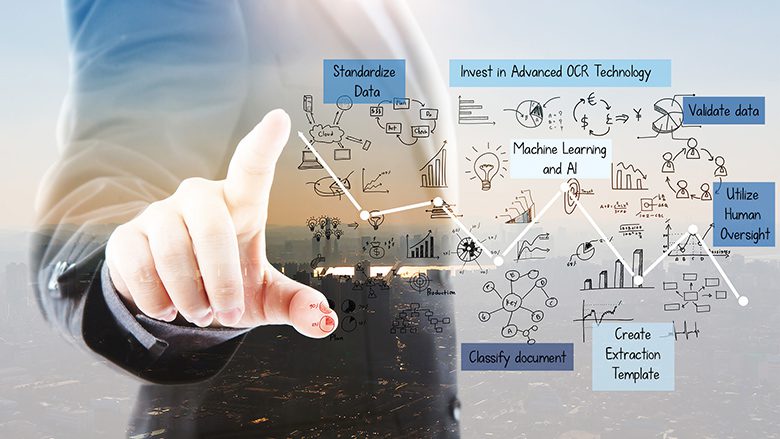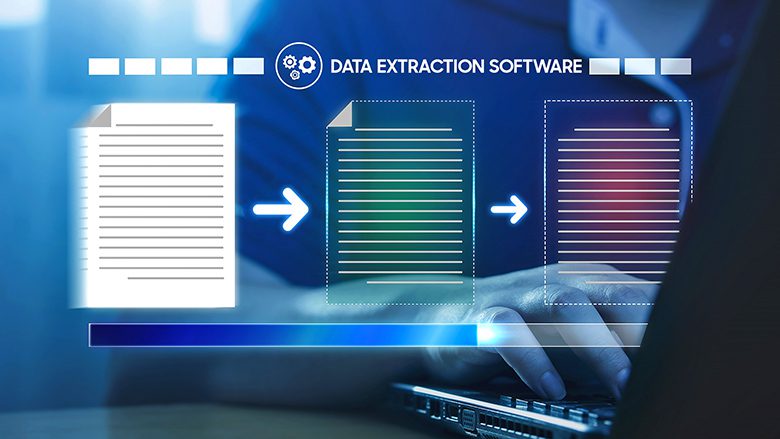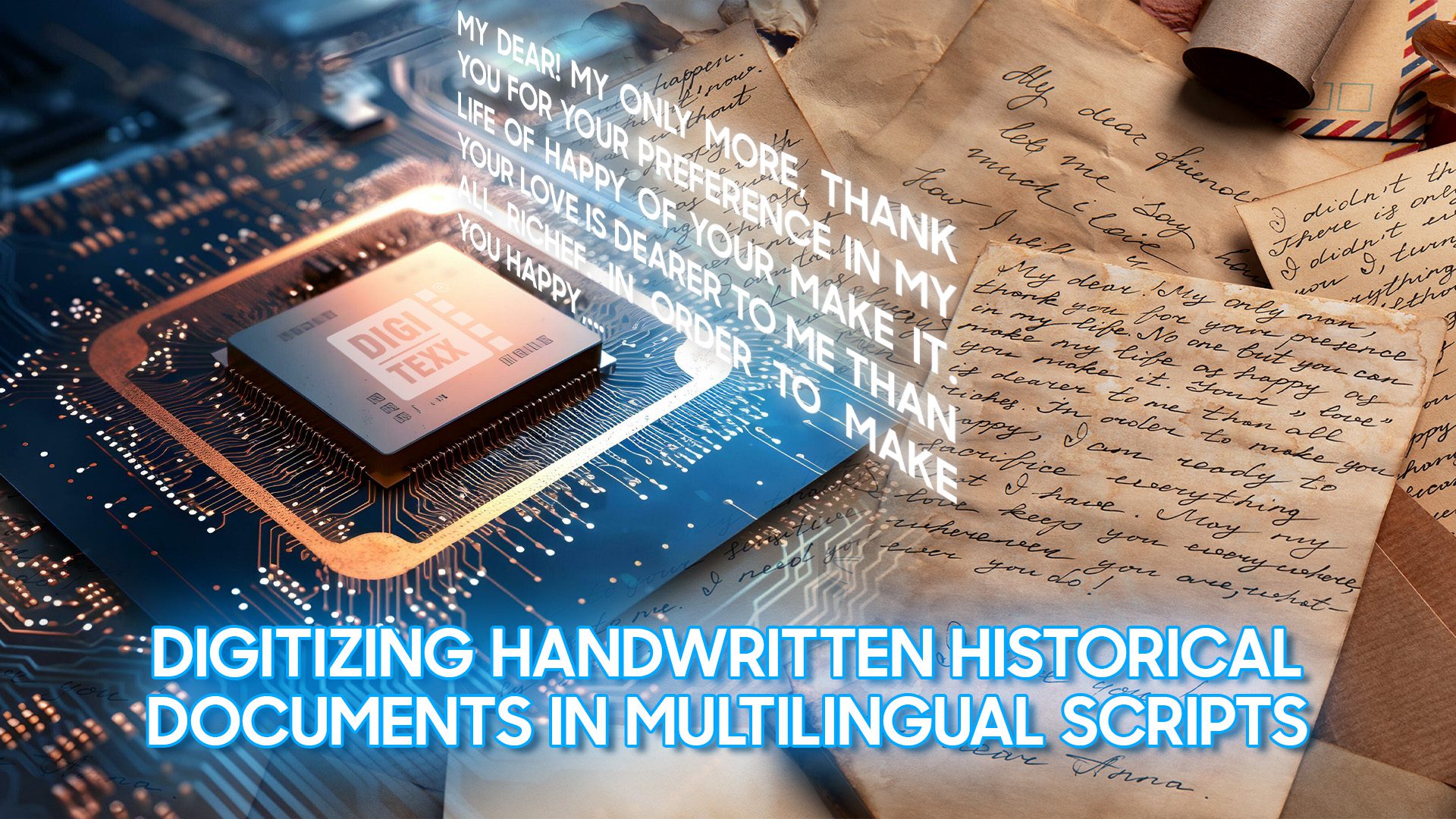In today’s data-driven world, businesses increasingly rely on automated systems to streamline their operations. One crucial area where automation plays a significant role is in invoice data extraction. Accurate invoice data extraction is essential for efficient financial management, compliance, and decision-making.
However, achieving high accuracy in this process takes time and effort. In this article, we will explore best practices and strategies at DIGI-TEXX for improving accuracy in invoice data extraction.

Understanding the Importance of Accuracy
Before delving into the strategies, let’s underscore why accuracy in invoice data extraction matters:
- Financial Integrity and Trustworthiness
Accurate invoice data extraction is essential for maintaining the financial integrity of an organization. Inaccurate data leads to financial discrepancies, errors in financial statements, and the potential for financial fraud. When financial records are compromised, it erodes trust among stakeholders, including investors, clients, and regulatory authorities.
High accuracy in invoice data extraction ensures that financial data is trustworthy and reliable.
- Regulatory Compliance
In many industries, businesses are subject to stringent regulatory requirements governing financial reporting and documentation. Non-compliance can result in substantial fines and legal repercussions. Accurate data extraction ensures that organizations meet these compliance standards, reducing the risk of regulatory violations.
- Operational Efficiency
Accurate invoice data extraction significantly contributes to operational efficiency. Data extracted with precision reduces the need for manual intervention and correction, speeding up the invoice processing cycle. This efficiency translates into cost savings as fewer human resources are required for data verification and reconciliation.
- Enhanced Decision-Making
High-quality data is the bedrock of effective decision-making. Accurate invoice data provides organizations with the confidence to make informed decisions based on real-time financial information. Whether it’s evaluating vendor performance, optimizing cash flow, or assessing budget allocation, accurate data is crucial for strategic decision-making.

- Improved Cash Flow Management
Accurate invoice data extraction directly impacts cash flow management. Precise information on receivables and payables enables organizations to project cash flow more accurately. This, in turn, helps businesses plan for future investments, debt management, and working capital needs effectively.
- Auditing and Risk Management
Accurate data is essential for internal and external audits. Audits are more straightforward when financial records are error-free, and organizations demonstrate their compliance with financial regulations and internal controls. Additionally, accurate data extraction assists in identifying potential financial risks and vulnerabilities, allowing for timely risk mitigation.
- Data Analytics and Insights
In today’s data-driven business landscape, accurate invoice data extraction is foundational for deriving meaningful insights. Precise data can be analyzed to identify trends, optimize supplier relationships, negotiate better terms, and uncover cost-saving opportunities. These insights drive business growth and competitiveness.
- Cost Reduction
Accurate data extraction minimizes the costs associated with manual data entry, error correction, and dispute resolution. It reduces the need for back-and-forth communication with suppliers or customers regarding billing discrepancies, saving both time and resources.
Best Practices for Improving Accuracy
As digital transformation is changing the world, data accuracy plays an irreplaceable role in ensuring the integrity and quality of extracted data in each invoice. Here are some practices to boost the accuracy rate applied in financial processes.

- Invest in Advanced OCR Technology
High-Quality OCR Software: Invest in advanced Optical Character Recognition (OCR) software. High-quality OCR technology can accurately convert scanned or printed text on invoices into machine-readable data.
OCR Preprocessing: Implement preprocessing techniques to enhance the quality of scanned documents. This includes removing noise, adjusting contrast, and correcting skew or distortion.
Multi-Lingual Support: Ensure your OCR software supports multiple languages and character sets to handle invoices from various regions.
- Classify document
Document Type Recognition: Use machine learning models to classify invoices by type (e.g., sales invoices, purchase invoices, receipts). This helps in applying the correct extraction rules for each document type.
Automated Routing: Once classified, the system automatically routes invoices to the appropriate processing workflows based on their type.
Enhancing the input invoice refers to optimizing the quality and clarity of invoices at the time of receipt, which significantly improves the accuracy of data extraction and streamlines the entire invoicing process.
- Create Extraction Template
Create Custom Templates: Develop custom templates for different invoice formats commonly received by your organization. Templates guide the extraction process by specifying the location of key data fields.
Use AI for Template Learning: Incorporate artificial intelligence (AI) algorithms that can learn from historical invoices to adapt and improve template recognition over time automatically.
- Validate data
Data Validation Rules: Establish validation rules to cross-check extracted data against predefined criteria. For example, validate that the invoice number matches the associated purchase order or that the total amount aligns with line-item details.
Exception Handling: Implement an exception handling mechanism for data that doesn’t pass validation checks. This allows for manual review and correction of discrepancies.
- Machine Learning and AI
Machine Learning Models: Employ machine learning models to continuously improve data extraction accuracy. These models adapt to changing invoice formats and variations.
Data Labeling and Training: Use labeled data to train machine learning algorithms. Continuously update training data to account for new invoice layouts.
Natural Language Processing (NLP): Utilize NLP techniques to understand and extract unstructured text data, such as invoice descriptions or comments.
- Utilize Human Oversight
Human Review: Incorporate a human review step into the extraction process. Skilled operators can manually verify and correct any data extraction errors that automated systems miss.
Feedback Mechanisms: Encourage human reviewers to provide feedback on extraction errors. Use this feedback to fine-tune algorithms and reduce future errors.
- Standardize Data
Normalization: Standardize data formats and units across invoices. This includes consistent date formats, currency symbols, and measurement units. Standardization reduces errors caused by data inconsistencies.
Addressing Variations: Implement algorithms that handle variations in how data is presented, such as abbreviations, synonyms, or alternate spellings.
Constantly Improve Invoice Data Extraction Accuracy
Innovation technologies are continually developing to enhance the automation process. Therefore, it is important to ensure that your data extraction process continues to improve over time.
- Feedback Loops
Establish feedback loops to collect data on extraction errors and discrepancies. Use this data to refine and improve your extraction algorithms.
- Regular Training, Updates, and Maintenance
Continuously train your extraction system with new data and invoice samples. This ensures that the system stays up-to-date and accurate.
Stay Current: Keep your data extraction software and algorithms up-to-date with the latest advancements in OCR, machine learning, and AI technologies.
Adaptive Systems: Build systems that adapt to changing invoice layouts and data structures without requiring extensive reconfiguration.
- Quality Assurance and Testing
Testing Environments: Maintain separate testing environments where you can evaluate the accuracy of data extraction algorithms with sample invoices before deploying changes in a production environment.
Benchmarking: Continually benchmark the accuracy of your data extraction system following industry standards and competitors to identify areas for improvement.
Popular Invoice Data Extraction Software
Invoice data extraction software is designed to automate the process of capturing essential information from invoices, including invoice numbers, dates, line items, and payment details. These solutions employ advanced technologies such as Optical Character Recognition (OCR), machine learning, and natural language processing to achieve high accuracy rates.

- ABBYY FlexiCapture: ABBYY’s FlexiCapture is a versatile data capture and document processing solution that excels in extracting data from invoices, receipts, and various document types.
- Kofax TotalAgility: Kofax offers a comprehensive intelligent automation platform that includes invoice processing capabilities, leveraging AI and machine learning.
- Rossum: Rossum’s cognitive data capture platform specializes in extracting data from invoices with a focus on flexibility and ease of integration.
- SAP Concur: SAP Concur’s invoice management solution is designed to simplify the entire invoice process, from submission to payment, using advanced OCR and AI technologies.
- DIGI-XTRACT: A Document Processing solution built on the base of Machine Learning and Deep Learning technologies to perform document classification, data extraction, and quality control applied to various document types.
When selecting an invoice data extraction software solution, consider factors such as your business’s specific needs, integration capabilities, scalability, and budget. It’s also advisable to request demonstrations or trials to assess the software’s performance and accuracy.
Investing In Accurate Invoice Data Extraction Is An Investment In The Future Success Of Your Business
Improving accuracy in invoice data extraction is critical for the financial integrity, compliance, and operational efficiency of your business. By following best practices such as choosing the right software, implementing validation checks, and leveraging machine learning, you can enhance accuracy.
Additionally, strategies such as feedback loops, regular training, and benchmarking ensure that your data extraction process continues to improve over time. Embracing these approaches will not only save your organization time and expenses but also empower you with high-quality data for better decision-making processes.
CONTENT CONSULTED BY

PHAM QUOC DUNG



